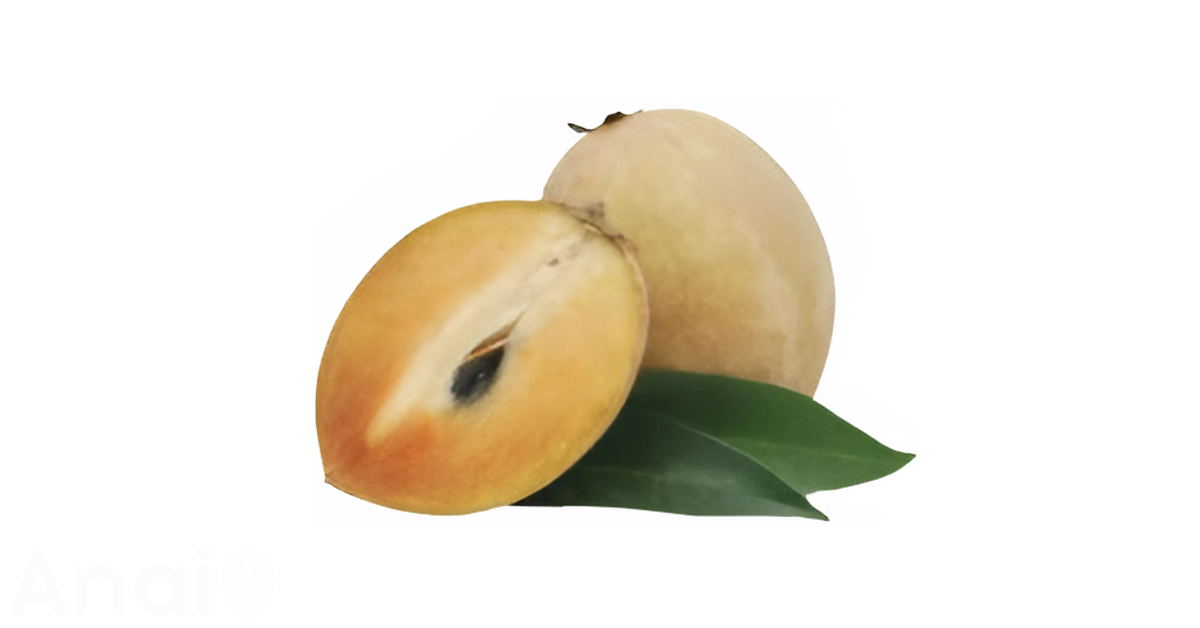Are Sapodillas Good for You?
Yes, sapodillas are incredibly good for you. They are a nutrient-dense fruit packed with essential vitamins and minerals. Sapodillas are particularly high in dietary fiber, with a single fruit providing a significant portion of your daily needs. They are also an excellent source of vitamin C and the mineral copper. Their rich antioxidant profile offers protection against cellular damage.
This article will explore the 12 powerful health benefits of sapodillas, sapodilla nutrition facts, risks and side effects, and substitutes. We will also cover popular sapodilla diets, sapodilla storage tips, 5 useful sapodilla home remedies, sapodillas and weight management, and their use for specific health conditions. All information is current as of December 2025.
12 Powerful Health Benefits of Sapodillas
Sapodilla is a powerhouse of nutrition. Its health benefits are supported by its impressive profile of vitamins, minerals, fiber, and plant compounds. Each benefit listed below is backed by scientific data and publications.
1. Packed with Powerful Antioxidants
Sapodillas are loaded with beneficial plant compounds. These include polyphenols like tannins and flavonoids (Kubala, 2022). Two of these compounds, gallic acid and quercetin, have demonstrated potent antioxidant activity. Antioxidants help neutralize free radicals in the body. This action protects cells from damage and may reduce the risk of chronic illnesses like heart disease and cancer (Tan, 2024).
2. Exceptionally High in Fiber
Sapodilla is a fantastic source of dietary fiber. A single 170-gram fruit contains about 9 grams of fiber, which accounts for 32% of the recommended Daily Value (DV) (Nutritionix, 2016). In a study comparing 37 fruits, sapodilla was found to have the highest fiber content (Kubala, 2022). Adequate fiber intake is crucial for digestive health, blood sugar regulation, and maintaining a healthy weight.
3. Boosts Immune Function
This fruit is a great ally for your immune system. One sapodilla provides 28% of the DV for vitamin C and 16% of the DV for copper (Netmeds, 2021). Vitamin C is a powerful antioxidant that is vital for immune cell function and fighting infections. Copper also plays a critical role in maintaining a healthy immune system and forming new blood cells (Tan, 2024).
4. Supports Heart Health
The potassium content in sapodilla supports cardiovascular health. A 170-gram fruit delivers 328 milligrams of potassium, which helps regulate blood pressure (WebMD, 2024). The high fiber content also contributes to heart health by helping to manage cholesterol levels.
5. Possesses Anti-Inflammatory Properties
The tannins found in sapodilla are not just antioxidants; they also have anti-inflammatory properties. Research suggests these compounds may be beneficial for inflammatory conditions of the digestive tract. This includes issues like erosive gastritis, reflux esophagitis, and enteritis (Bangar et al., 2022).
6. Promotes Healthy Digestion
The high fiber content is a major benefit for your gut. Fiber adds bulk to stool, promoting regular bowel movements and preventing constipation. In traditional medicine, parts of the sapodilla plant have been used to help with diarrhea and dysentery, likely due to the astringent effects of its tannins (Kubala, 2022).
7. Provides a Natural Energy Boost
Sapodilla is a high-calorie fruit, providing 83 calories per 100 grams (Tan, 2024). This energy comes from soft, easily digestible pulp made of simple sugars like fructose and sucrose. This makes it an excellent and healthy source of quick energy for the body.
8. Enhances Vision and Skin Health
Sapodillas contain Vitamin A, an essential nutrient for good health. Vitamin A is vital for maintaining good vision. It is also a key component for keeping mucous membranes and skin healthy. Diets rich in vitamin A are known to offer protection in various ways (Netmed, 2021).
9. Aids Red Blood Cell Formation
The fruit is a good source of iron and copper. Both minerals are essential for producing hemoglobin, the protein in red blood cells that carries oxygen throughout the body. A 170-gram sapodilla contains 8% of the DV for iron (Kubala, 2022).
10. May Help Regulate Blood Sugar
Despite its sweet, brown sugar-like taste, sapodilla has a low glycemic index (GI) of 37 (Foodstruct, 2023). Low-GI foods are digested and absorbed more slowly, leading to a steadier rise in blood sugar levels. This, combined with its high fiber content, makes it a suitable fruit for managing blood sugar.
11. Strengthens Bones
Sapodilla contains several minerals necessary for strong bones. A single fruit offers 36 milligrams of calcium along with magnesium and phosphorus (Tan, 2024). These minerals are the building blocks of bone tissue and are essential for preventing bone density loss.
12. May Have Anti-Cancer Properties
The combination of fiber, antioxidants, and vitamins in sapodilla may contribute to cancer prevention. High-fiber diets are linked to a lower risk of colon cancer (Kubala, 2022). Additionally, vitamin A offers protection against oral cavity cancers, and some older rodent studies have shown sapodilla extract to have antitumor effects (Netmed, 2021).
Sapodilla Nutrition Facts
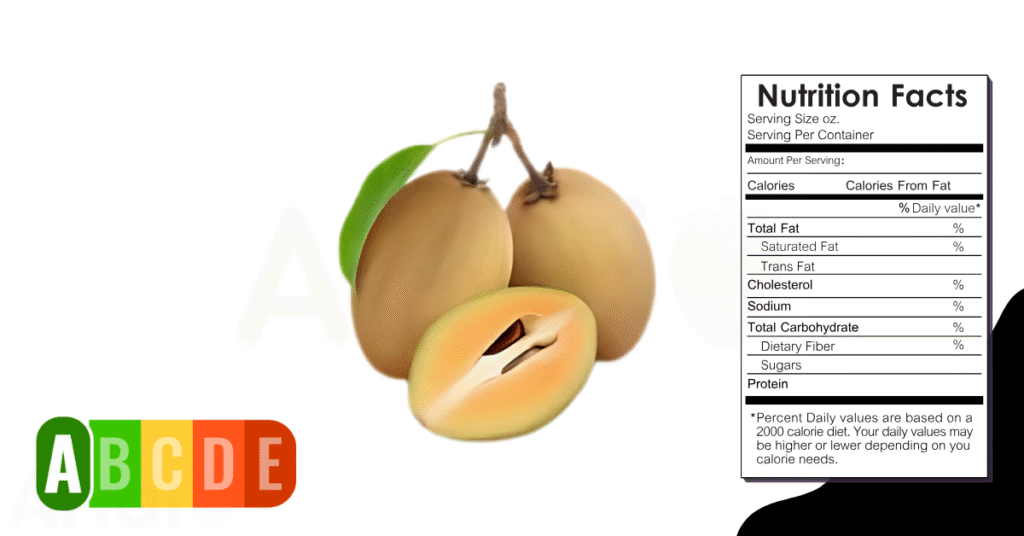
The impressive health benefits of sapodillas can be further explained by their nutritional composition, which is analyzed in detail below.
Sapodilla Nutrition Table
A standard serving size for a sapodilla is one medium fruit, which weighs approximately 170 grams. The following table breaks down its primary nutritional components.
| Nutrient | Per Serving (170g) | DRI % (Serving) | Per 100 grams | DRI % (100 g) |
|---|---|---|---|---|
| Calories | 141.1 kcal | 7.1% | 83 kcal | 4.2% |
| Protein | 0.75 g | 1.5% | 0.44 g | <1% |
| Carbs | 33.93 g | 11.3% | 19.9 g | 6.6% |
| Total Fat | 1.87 g | 2.4% | 1.10 g | 1.4% |
| Cholesterol | 0 mg | 0% | 0 mg | 0% |
How many calories are in sapodillas?
A single 170-gram sapodilla contains 141.1 calories, which is about 7% of the recommended daily intake for an average adult on a 2,000-calorie diet. Per 100 grams, the fruit provides 83 calories. The calories are primarily from its natural sugars, making it a good source of quick energy.
To burn off the 141 calories from one sapodilla, an average person would need to walk for approximately 25-30 minutes.
How much protein is in sapodillas?
Sapodillas are not a significant source of protein. A 170-gram serving contains just 0.75 grams of protein, which is less than 2% of the daily recommended intake. The amount per 100 grams is even lower, at 0.44 grams.
How many carbs are in sapodillas?
Sapodillas are rich in carbohydrates, with a 170-gram fruit providing 33.93 grams, or about 11% of the daily value. These carbohydrates are mostly simple, digestible sugars like fructose and sucrose, which is what gives the fruit its sweet taste and energy-boosting properties (Bangar et al., 2022).
How much fat is in sapodillas?
The fat content in sapodilla is very low. A 170-gram serving has only 1.87 grams of fat. The majority of this fat is heart-healthy monounsaturated fat.
| Fat Type | Amount per 170g Serving |
|---|---|
| Total Fat | 1.87 g |
| Saturated Fat | 0.33 g |
| Monounsaturated Fat | 0.89 g |
| Polyunsaturated Fat | 0.02 g |
Are sapodillas high in cholesterol?
Sapodillas are completely free of cholesterol. A serving of sapodilla contains 0 mg of cholesterol, making it an excellent choice for a heart-healthy diet.
Minerals in sapodillas
Sapodilla is a good source of several essential minerals. It is particularly rich in copper and potassium.
| Mineral | Amount per 170g Serving | DRI % | Health Benefits |
|---|---|---|---|
| Copper | 0.15 mg | 17% | Crucial for forming red blood cells, maintaining nerve cells, and supporting the immune system. |
| Iron | 1.36 mg | 7.5% | Essential for producing hemoglobin, which carries oxygen in the blood, preventing anemia. |
| Potassium | 328.1 mg | 7% | Helps regulate blood pressure, fluid balance, and muscle contractions. |
| Magnesium | 20.4 mg | 5% | Involved in over 300 biochemical reactions in the body, including nerve function and bone health. |
| Calcium | 35.7 mg | 3% | Vital for building and maintaining strong bones and teeth. |
These minerals work together to support various bodily functions. The copper and iron content are important for blood health, while potassium and magnesium are key for cardiovascular function and blood pressure regulation.
Vitamins in sapodillas
This fruit provides a significant amount of vitamin C, along with other essential B vitamins.
| Vitamin | Amount per 170g Serving | DRI % | Health Benefits |
|---|---|---|---|
| Vitamin C | 24.99 mg | 28% | A powerful antioxidant that boosts the immune system, promotes skin health by aiding collagen production, and helps heal wounds. |
| Pantothenic Acid (B5) | 0.43 mg | 9% | Helps convert food into energy and is important for creating red blood cells. |
| Folate (B9) | 23.8 mcg | 6% | Crucial for cell growth and metabolism, and especially important during pregnancy to prevent birth defects. |
| Vitamin B6 | 0.06 mg | 3.5% | Important for brain development and function, as well as immune system health. |
| Vitamin A | 102 IU | 2% | Essential for vision health, immune function, and cell growth. |
The standout vitamin in sapodilla is Vitamin C, with a single fruit providing over a quarter of the daily requirement. The B vitamins present in sapodilla contribute to the body’s energy metabolism and overall cellular health.
Risks and Side Effects
While sapodilla is safe and healthy for most people, there are a few risks to consider. The most common issue arises from eating unripe fruit. Raw sapodilla contains high concentrations of latex and tannins, making it intensely bitter. This can cause mouth ulcers, an itchy throat, and even breathing difficulty, particularly in children (Nutrition-and-You, 2023).
The seeds of the sapodilla fruit should never be consumed. They are hard, have a small hook that can pose a choking hazard, and contain toxic compounds. Ingesting even a few seeds can lead to abdominal pain and vomiting due to substances like saponin and hydrocyanic acid (Bangar et al., 2022).
Although very rare, allergies to sapodilla do exist. Some individuals may experience an allergic reaction that, in severe cases, could lead to anaphylaxis. If you have a known latex allergy, you might have a higher chance of reacting to sapodilla, so it is best to exercise caution.
Debunking Myths About Sapodillas
Myth: Sapodillas are bad for people with diabetes because they are extremely sweet.
Fact: Despite its malty, brown-sugar-like sweetness, sapodilla has a low glycemic index (GI). This means it is digested and absorbed slowly, preventing sharp spikes in blood sugar. The fruit’s high fiber content further aids in regulating blood sugar absorption, making it a suitable fruit for individuals managing diabetes when consumed in moderation as part of a balanced diet.
Myth: Sapodilla seeds are a natural remedy and can be safely eaten.
Fact: This is a dangerous misconception. Sapodilla seeds are harmful if ingested. Not only do they present a significant choking hazard due to their protruding hook, but they also contain toxic compounds, including saponin and sapotinin. Eating the seeds can lead to adverse effects like stomach pain and vomiting. They should always be removed and discarded before eating the fruit.
Substitutes
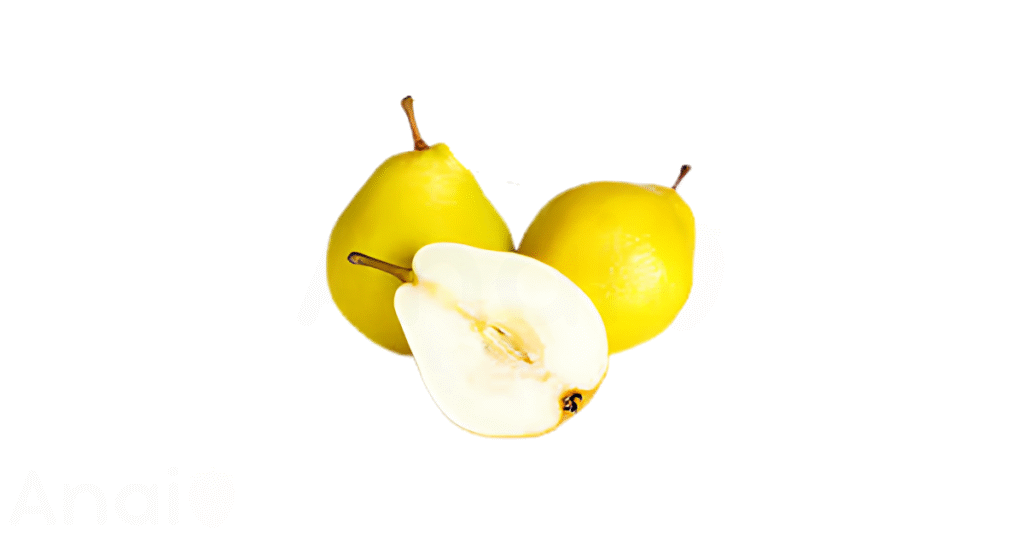
Sapodilla’s unique flavor and texture can be difficult to replicate, but several other fruits can serve as effective substitutes in recipes or for fresh eating.
| Nutrient (per 100g) | Sapodilla | Pear | Persimmon (Japanese) | Mamey Sapote |
|---|---|---|---|---|
| Calories | 83 kcal | 57 kcal | 70 kcal | 124 kcal |
| Fiber | 5.3 g | 3.1 g | 3.6 g | 5.5 g |
| Vitamin C | 14.7 mg | 4.3 mg | 7.5 mg | 23 mg |
The best substitute depends on whether you are trying to match the flavor, the texture, or the nutritional profile.
For a soft and grainy texture, a ripe pear is a good choice. Use soft varieties like Bartlett or Comice. While pears are more widely available and lower in calories, they lack the characteristic malty flavor of sapodilla and have less fiber and vitamin C.
A very ripe Hachiya persimmon offers a similar soft, custardy texture. Its flavor is more akin to honey and apricot, which can be a pleasant alternative. However, it does not replicate the brown-sugar notes of sapodilla and is lower in fiber.
The closest substitute, both in flavor and texture, is the mamey sapote. This fruit has a creamy consistency and a flavor profile often described as a mix of sweet potato, pumpkin, and almond, which closely mimics sapodilla. It is also nutritionally similar, with high fiber and even more vitamin C. Its main drawback is that it can be just as difficult to find as sapodilla in many parts of the U.S.
Popular Sapodilla Diets
How to add sapodillas safely into your diet? Choosing the right diet is important to ensure that you are meeting your nutritional needs while also enjoying the foods you eat. Here are a few of the available sapodillas-friendly diet options:
- A Balanced, Whole Foods Diet
- The Mediterranean Diet
- A Fruit-Focused Diet (Fruitarianism)
| Diet Type | Key Principles | Benefits with Sapodilla | Drawbacks |
|---|---|---|---|
| Balanced, Whole Foods | Emphasizes unprocessed foods, including fruits, vegetables, lean proteins, and whole grains. Limits processed items, sugar, and unhealthy fats. | Sapodilla fits perfectly as a natural, unprocessed sweet treat. Provides fiber, vitamins, and minerals to a well-rounded diet. | Requires meal planning and preparation. May be more time-consuming than diets relying on convenience foods. |
| Mediterranean Diet | Focuses on plant-based foods like fruits, vegetables, whole grains, legumes, and nuts. Uses olive oil as the primary fat source and includes moderate fish and poultry. | Sapodilla can be included as one of the daily fruit servings, contributing to the diet’s high antioxidant and fiber content. | May require sourcing specific ingredients like fresh fish and quality olive oil. Not all sapodilla flavor pairings align with Mediterranean cuisine. |
| Fruit-Focused Diet | A restrictive diet consisting primarily of raw fruit. Some variations may include nuts and seeds. | Sapodilla is a staple due to its calorie density and nutrient profile, providing essential energy and vitamins. | Extremely restrictive and nutritionally incomplete. Leads to deficiencies in protein, fat, calcium, iron, and B vitamins. Not recommended for long-term health. |
A Balanced, Whole Foods Diet is arguably the most sustainable and healthful approach. This diet pattern prioritizes nutrient density over restriction. It encourages consuming a wide variety of natural foods, making it easy to incorporate seasonal and tropical fruits like sapodilla. The goal is to nourish the body with a full spectrum of macro and micronutrients, and sapodilla contributes valuable fiber, vitamins, and natural energy without relying on processed sugars.
The Mediterranean Diet is consistently ranked as one of the healthiest eating patterns in the world. It is rich in anti-inflammatory foods and has been linked to a lower risk of heart disease and other chronic conditions. While not native to the Mediterranean region, sapodilla can easily be part of the recommended daily fruit intake. Its sweet, malty flavor can be used in fruit salads or as a naturally sweet dessert, aligning with the diet’s emphasis on fresh, whole foods over processed sweets.
A Fruit-Focused Diet, often called fruitarianism, is a highly restrictive vegan diet. While sapodilla would be a key component in this diet due to its calorie and nutrient content, this eating pattern is not recommended by nutrition experts. Relying almost exclusively on fruit leads to severe nutritional deficiencies, including a lack of protein, essential fatty acids, vitamin B12, iron, and calcium, which can cause serious health problems over time.
How to Cook Sapodillas?
The best way to enjoy sapodilla’s unique flavor is to eat it raw, which also preserves all of its delicate nutrients. However, the fruit’s sweet, brown-sugar flavor also lends itself to several simple cooking applications.
Raw sapodillas offer the most nutritional benefit and the truest flavor experience. When a sapodilla is soft to the touch, it is perfectly ripe. Simply slice it in half, scoop out the inedible black seeds, and eat the flesh with a spoon. This method ensures you receive 100% of its heat-sensitive vitamin C and other delicate phytonutrients. There is no nutrient loss, making it the healthiest way to consume the fruit.
Baked sapodillas are not typically baked on their own but are instead mashed and added to batters for cakes, pies, and breads, much like bananas. This is a popular method in the Bahamas. Baking will cause a significant reduction in vitamin C content, but the fiber and mineral content will remain largely intact. The benefit of this method is that it imparts a moist texture and a naturally sweet, caramel-like flavor to baked goods, reducing the need for added sugar.
Fried sapodillas, a popular preparation in Indonesia, involve slicing the fruit and lightly frying it. This method creates a warm, caramelized exterior with a soft, gooey center. While delicious, frying is the least healthy option. It adds extra calories and fat, and the high heat will destroy most of the vitamin C. This should be considered an occasional treat rather than a regular method of consumption.
Easy Sapodilla Recipes
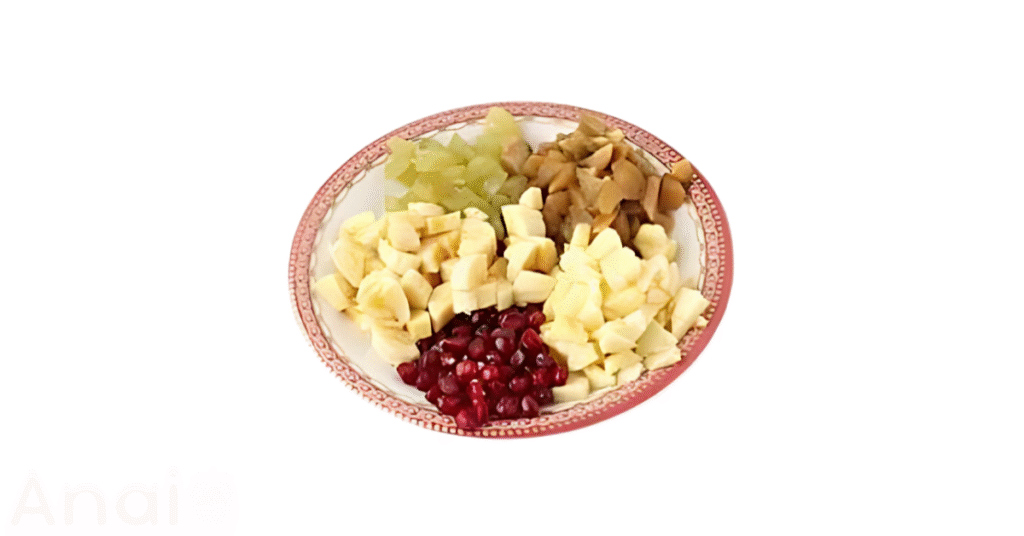
The following sapodilla recipes can help you increase your intake of this nutritious fruit without compromising on taste.
Breakfast ideas with sapodillas
A sapodilla-milkshake (chikoo milkshake) is a classic and refreshing way to start the day. Blend the flesh of one ripe, seedless sapodilla with a cup of milk (dairy or plant-based) and a touch of honey or maple syrup if desired. The fruit’s natural sweetness and creamy texture create a filling and energy-boosting smoothie.
Sapodilla pancakes are another excellent breakfast option. Mash the pulp of a ripe sapodilla and add it directly to your favorite pancake batter. This infuses the pancakes with a malty sweetness and makes them incredibly moist, reducing the need for syrup.
Lunch ideas with sapodillas
A sapodilla fruit salad makes for a light and exotic lunch. Combine chunks of ripe sapodilla with other tropical fruits like mango, pineapple, and kiwi. A squeeze of lime juice can brighten the flavors and prevent browning. The high fiber content will help keep you full and satisfied.
For a savory twist, prepare a sapodilla chutney. Cook down diced sapodilla with ginger, onions, a little vinegar, and spices like cinnamon and clove. This sweet and tangy chutney pairs wonderfully with grilled chicken, fish, or a simple cheese and cracker plate.
Dinner ideas with sapodillas
Sapodilla sauce for grilled meats can elevate a simple dinner. Create a savory sauce by pureeing sapodilla with a bit of soy sauce, ginger, garlic, and a hint of chili. This sauce works especially well with pork or duck, providing a flavor profile similar to a plum sauce.
Incorporate sapodilla into a tropical-themed curry. While unconventional, adding chunks of firm-ripe sapodilla toward the end of the cooking time can add a surprising burst of sweetness that complements the rich and spicy flavors of a coconut-based curry.
Simple tips to add sapodillas to your diet
For busy people who don’t have the time to implement any of the previous meal ideas, there are simple tips to add Sapodillas to their diet.
- Slice a ripe sapodilla and add it to your morning oatmeal or yogurt.
- Chop it up and mix it into a simple bowl of cottage cheese for a high-protein snack.
- Freeze chunks of sapodilla and eat them as a simple, sorbet-like dessert.
- Muddle ripe sapodilla at the bottom of a glass before adding sparkling water for a refreshing, low-sugar soda alternative.
- Use pureed sapodilla as a natural sweetener in homemade energy balls with oats and nuts.
- Simply eat the fruit on its own by cutting it in half and using a spoon.
Sapodilla Storage Tips
Knowing how to cook sapodillas is only a part of the equation; it’s just as important to know sapodilla storage tips to make those meals last for longer.
Shelf life of sapodillas
- At room temperature: Unripe fruit will ripen in 7 to 10 days. Ripe fruit will last for up to one week.
- In the refrigerator: Ripe, whole fruit can be stored for up to one week. Cut fruit will last for about five days.
- In the freezer: Properly stored sapodilla pulp can last for several months.
How to store sapodillas?
Proper storage begins with selection. Choose fruits with smooth, brown skin, free from cracks, wrinkles, or bruises. To check for ripeness, you can gently scratch the surface; if the skin underneath is brown and not green, it is mature. Unripe, mature fruits should be stored at room temperature to allow them to ripen naturally.
Once a sapodilla yields to gentle thumb pressure, it is ripe and ready to eat. At this stage, you can extend its life by moving it to the refrigerator. Proper storage not only preserves the fruit’s texture and flavor but also ensures its nutritional benefits are maintained for as long as possible.
How to refrigerate sapodillas?
To refrigerate ripe sapodillas, follow these simple steps:
- Place the whole, ripe sapodillas in the crisper drawer of your refrigerator.
- If you have cut the fruit, place the pieces in an airtight container or wrap them tightly with plastic wrap.
- Store for up to one week for whole fruit or five days for cut fruit.
How to freeze sapodillas?
Freezing is an excellent option for long-term storage.
- Wash and peel the ripe sapodilla fruit.
- Cut the fruit in half and remove all the seeds.
- You can either puree the flesh or leave it in chunks.
- Place the pulp or chunks in an airtight, freezer-safe container or bag.
- Label with the date and store in the freezer.
Signs of Spoilage in sapodillas
It is easy to tell when a sapodilla has gone bad. Discard the fruit if you notice any of the following:
- Wrinkled or shriveled skin
- Mushy texture or soft, dark spots
- Visible mold growth
- A fermented or sour smell
5 Useful Sapodilla Home Remedies
Are there any less-known tips to unlock the nutritious profile of sapodillas? The following sapodilla remedies, rooted in traditional medicine, can have a positive effect on overall well-being.
- For Digestive Aid. The high fiber content of ripe sapodilla fruit makes it an excellent natural remedy for constipation. Conversely, the tannins in the fruit have astringent properties, which is why different parts of the plant have been traditionally used to help manage diarrhea and dysentery. Simply consuming the ripe fruit can help regulate the digestive system.
- For Coughs and Colds. In folk medicine, a decoction made from the flowers or leaves of the sapodilla tree is used as an expectorant to help relieve chest congestion, coughs, and colds. The fruit itself is also beneficial due to its high Vitamin C content, which helps boost the immune system to fight off infections.
- As an Anti-inflammatory. Sapodilla contains a class of antioxidants called tannins, which have demonstrated anti-inflammatory effects. These compounds are believed to help soothe inflammatory conditions within the digestive tract, such as gastritis and enteritis. Consuming the fruit regularly may contribute to reducing internal inflammation.
- For Stopping Minor Bleeding. The sapodilla plant possesses hemostatic properties, meaning it can help stop bleeding. In traditional practices, extracts from the plant were applied to wounds and hemorrhoids to help control bleeding, thanks to the astringent nature of its tannins.
- As a Soothing Paste for Bites. The seeds of the sapodilla fruit, while toxic if ingested, have been used topically in some cultures. A paste made from crushed sapodilla seeds has been applied to the skin to soothe stings and venomous insect bites. It is critical to only use this remedy externally and never consume the seeds.
Sapodillas and Weight Management

There are multiple health benefits and home remedies using sapodillas, but what is their role in weight management? This section will analyze sapodilla’s potential impact on weight loss, low-calorie diets, satiety, and metabolism.
Can sapodillas help with weight loss?
Sapodilla can be a beneficial component of a weight management plan. One reason is its role as a diuretic, helping the body remove excess water and toxins through urination. This can reduce fluid retention and bloating, which are sometimes mistaken for weight gain. Some sources suggest that consuming sapodilla helps the kidneys in this process, contributing to a feeling of lightness and supporting weight loss efforts naturally.
Sapodillas in low-calorie diets
With approximately 83 calories per 100-gram serving, sapodilla is a relatively low-calorie food, especially considering its nutrient density. It can easily fit into a calorie-controlled diet. Its naturally sweet flavor can satisfy sugar cravings, providing a healthier alternative to high-calorie, processed desserts that offer little nutritional value.
Sapodillas and satiety
The most significant contribution of sapodilla to weight management is its effect on satiety, or the feeling of fullness. This is due to its exceptionally high fiber content. A single 170-gram fruit provides 9 grams of dietary fiber. According to a study mentioned by WebMD, this amount is substantial, especially when considering most Americans only consume about 16 grams of fiber per day. High-fiber foods slow down digestion, which keeps you feeling full for longer and can reduce overall calorie intake.
Sapodillas and metabolism
Sapodilla supports a healthy metabolism through its rich profile of B-complex vitamins, including pantothenic acid and folate. These vitamins are essential cofactors in various metabolic processes, helping the body efficiently convert carbohydrates, fats, and proteins from food into usable energy. Furthermore, the natural sugars in sapodilla, like fructose and sucrose, provide a quick source of energy, making it an excellent pre-workout snack to fuel physical activity.
Sapodillas for Health Conditions
While weight management is important, do sapodillas have an effect in more serious health conditions? Here’s what the scientific literature has to say:
Sapodillas and diabetes
Sapodilla appears to have properties that could benefit blood sugar control. In a study on mice, methanolic extracts from sapodilla seeds demonstrated hypoglycemic (blood sugar-lowering) activity in both glucose tolerance tests and diabetes models induced by alloxan (Sharma et al., 2022). This suggests that compounds within the fruit may play a role in managing blood sugar levels, although human studies are needed to confirm these effects.
Sapodillas and heart health
The fruit shows promise for protecting cardiovascular and liver health. Research on rats with chemically-induced liver damage found that treatment with a lyophilized sapodilla extract significantly reversed the elevation of liver damage biomarkers and improved the serum lipid profile by lowering cholesterol and triglycerides (Alrashood et al., 2020). These hepatoprotective and lipid-lowering effects are likely linked to the fruit’s powerful antioxidant activity.
Sapodillas and digestive issues
Sapodilla has been traditionally used for various digestive complaints, and modern science is beginning to support this. A study on rats found that an aqueous extract of sapodilla fruit provided significant protection against ethanol-induced gastric ulcers, with a 300 mg/kg dose showing 76% protection (Sharma et al., 2022). The fruit’s extracts have also shown antidiarrheal and antispasmodic effects, which may be due to the presence of flavonoids and saponins.
Sapodillas and inflammation
Extracts from the sapodilla plant have demonstrated notable anti-inflammatory activity. One study used an ethyl acetate extract from the leaves to test its effects on carrageenan-induced paw swelling in rats. The extract was found to inhibit swelling by 70% at a dose of 400 mg/kg, an effect attributed to the presence of flavonoids, steroids, and terpenoids (Sharma et al., 2022). This suggests compounds in sapodilla can significantly reduce inflammation.
Sapodillas and cancer prevention
Emerging research suggests sapodilla may have anti-cancer potential. In one lab study, silver nanoparticles created from an aqueous extract of sapodilla leaves showed high cytotoxicity against human colorectal carcinoma cells (HCT 116), inhibiting their growth with an IC50 value of 8 µg/mL after 72 hours (Sharma et al., 2022). While this is preliminary, it points to bioactive compounds in the plant that could be valuable for future cancer research.
The evidence for sapodilla’s use in these health conditions is promising but largely comes from preliminary animal and lab-based studies, indicating a need for more robust human clinical trials.
| Health Category | Benefits | Type of Study | Quality of Evidence | Sources |
|---|---|---|---|---|
| Diabetes | May lower blood glucose levels. | Animal (mice) | Preliminary | Sharma et al. (2022) |
| Heart/Liver Health | Lowers cholesterol and triglycerides; protects the liver from damage. | Animal (rats) | Preliminary | Alrashood et al. (2020) |
| Digestive Health | Protects against gastric ulcers; has antidiarrheal properties. | Animal (rats) | Preliminary | Sharma et al. (2022) |
| Inflammation | Reduces swelling and inflammation. | Animal (rats) & In Vitro | Preliminary | Sharma et al. (2022) |
| Cancer | Shows cytotoxic effects against cancer cell lines. | In Vitro (cell lines) | Emerging | Sharma et al. (2022) |
Final Thoughts on Sapodilla Nutrition
This article has explored the full spectrum of sapodilla nutrition, from its 12 powerful health benefits and detailed nutrition facts to its risks, substitutes, and place in popular diets. We have also covered practical sapodilla storage tips, 5 useful home remedies, its role in weight management, and its potential use for serious health conditions.
- A single sapodilla fruit contains an impressive 9 grams of dietary fiber, which is about 36% of the daily recommendation.
- The seeds of the sapodilla are toxic and pose a choking hazard due to a small, sharp hook. They should never be eaten.
- Sapodilla has a low glycemic index (GI) of 37, making it a good fruit choice for blood sugar management when eaten in moderation.
- The name of the popular chewing gum, “Chiclets,” was derived from “chicle,” the milky latex that seeps from the sapodilla tree.
- One sapodilla provides nearly 30% of your daily Vitamin C needs, a vital antioxidant for immune health.
- In traditional medicine, parts of the sapodilla plant have been used for everything from treating diarrhea to soothing insect bites.
The last content update was on December 2025.
Follow Anai.ai to stay informed about the latest nutrition and well-being news, tips and articles.
Sapodilla Nutrition FAQs
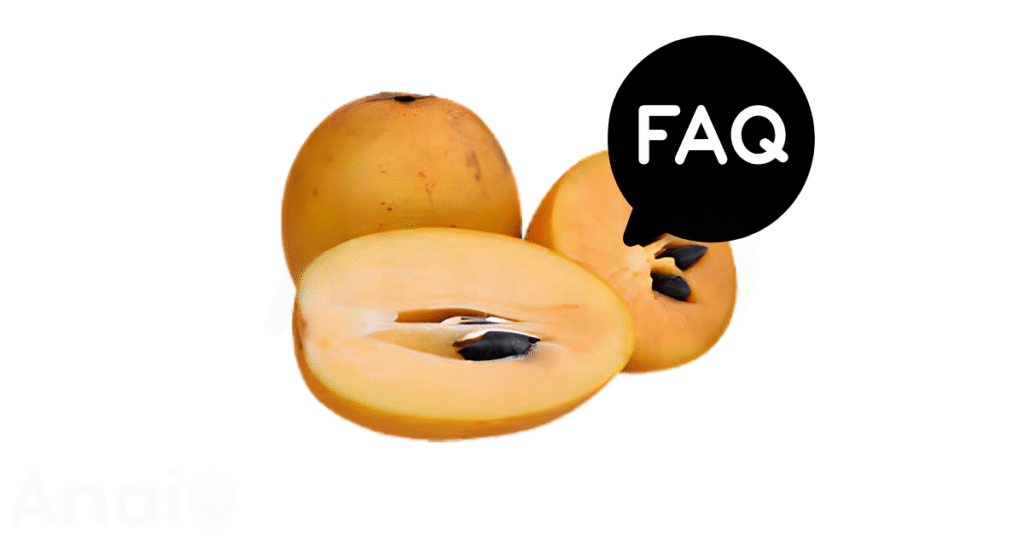
This section provides clear, expert-backed answers to the most common questions about sapodillas. Learn about their health benefits, dietary considerations, and safety. Get the facts you need quickly and easily.
What are sapodillas good for?
Sapodillas are excellent for digestive health, providing an impressive 9 grams of dietary fiber per 170-gram fruit, which is over 30% of the daily value. They are also a powerhouse of immune-boosting vitamin C, offering about 28% of your daily needs in a single serving. Rich in antioxidants like tannins and polyphenols, sapodillas help protect your cells from damage and have been used in traditional medicine to remedy issues like diarrhea and coughs.
Are sapodillas healthy?
Yes, sapodillas are very healthy and nutrient-dense. A medium fruit contains only about 141 calories while being packed with essential nutrients like fiber, vitamin C, and copper, providing 16% of the daily value for the mineral. They are also naturally free of cholesterol and very low in sodium, making them a heart-healthy choice for a naturally sweet snack.
Are sapodillas fattening?
Sapodillas are not inherently fattening when eaten in moderation as part of a balanced diet. While a single fruit contains around 141 calories primarily from natural sugars, its high fiber content promotes a feeling of fullness, which can help control overall calorie intake. Their nutritional benefits far outweigh their calorie count, making them a much better choice than processed, high-calorie snacks with no nutritional value.
Who should avoid sapodillas?
Individuals with a known allergy to sapodilla, though rare, should avoid the fruit entirely. More importantly, no one should ever eat the seeds, as they contain a small hook that poses a serious choking hazard and toxic compounds like saponins that can cause vomiting and stomach pain. It is also wise to avoid eating unripe sapodilla, as the high concentration of latex and tannins can cause mouth ulcers and throat irritation.
Can I eat sapodillas daily?
You can eat sapodillas daily, but moderation and variety are key to a healthy diet. Enjoying one sapodilla a day can be a great way to boost your intake of fiber and vitamin C. However, since they are a source of natural sugars, it’s important to balance their consumption with a wide variety of other fruits and vegetables to ensure you get a full spectrum of nutrients.
Can dogs eat sapodillas?
The flesh of a ripe sapodilla is generally considered non-toxic and safe for dogs to eat in very small quantities. However, the seeds are a major risk; they are a choking hazard and contain toxic compounds that can be harmful to dogs. Therefore, if you share sapodilla with your dog, you must ensure it is only the ripe flesh, with all seeds and skin completely removed.
Can cats eat sapodillas?
It is best to err on the side of caution and not feed sapodilla to cats. While the ripe flesh is not known to be toxic, cats are obligate carnivores and their digestive systems are not designed to process fruit. Most importantly, the seeds are a definite hazard, as they contain toxic compounds and can cause choking or an internal obstruction.
How long do sapodillas last in the fridge?
Once fully ripe, sapodillas can be stored in the refrigerator to extend their freshness. A whole, ripe sapodilla will last for up to one week when refrigerated properly in the crisper drawer. If you have already cut the fruit, it should be stored in an airtight container and will remain good for about five days.
Can you freeze sapodillas?
Yes, you can freeze sapodillas, which is an excellent method for long-term storage. For best results, you should peel the ripe fruit, remove all the seeds, and then puree the flesh or cut it into chunks. When stored in a proper freezer-safe, airtight container, sapodilla pulp can maintain its quality for several months.
How to tell if sapodillas are bad?
You can tell a sapodilla is bad by using your senses. Look for skin that is deeply wrinkled, shriveled, or has visible mold. Feel for a texture that is overly mushy or has developed soft, dark spots. Finally, a spoiled sapodilla will have a distinct, unpleasant fermented or sour odor instead of its typical sweet, malty fragrance.
How long are sapodillas good for?
The shelf life of a sapodilla depends on its ripeness and storage method. An unripe, mature fruit can be left at room temperature and will ripen within 7 to 10 days. Once it is ripe and soft to the touch, it will stay good at room temperature for up to a week, or you can refrigerate it to extend its freshness for a similar period.
How to keep sapodillas fresh?
To keep sapodillas fresh, you should store unripe, firm fruit at room temperature until they soften. Once a sapodilla yields to gentle pressure, it is ripe and should be moved to the refrigerator to slow down the ripening process. Storing ripe, whole sapodillas in the refrigerator can keep them fresh for up to one week.

